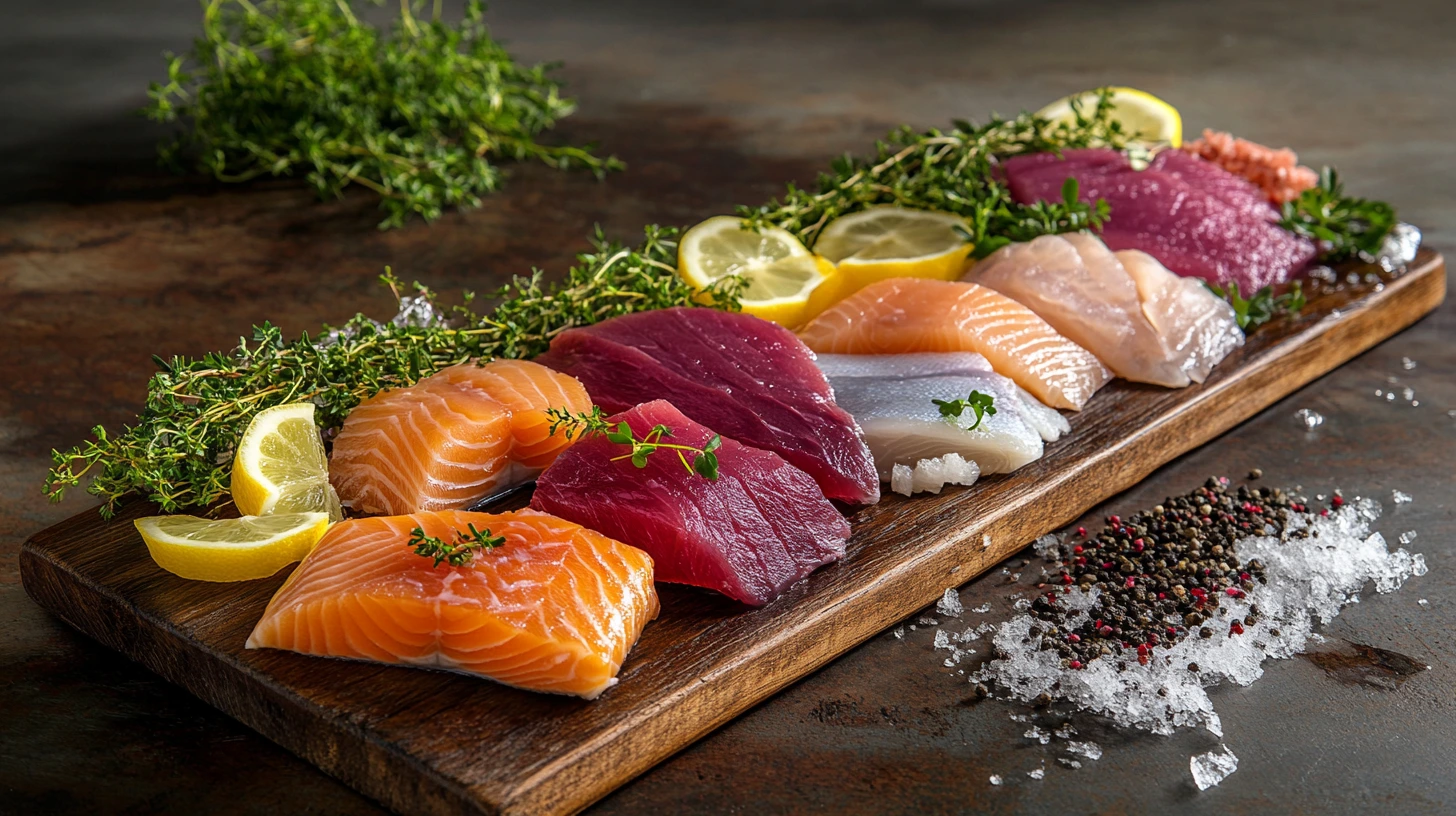When it comes to seafood, few topics spark as much debate as the quest to identify the tastiest fish in the world. From ocean waters to freshwater streams, fish enthusiasts and culinary experts alike have sought to pinpoint the species that offer the most delightful flavors and textures. While taste is inherently subjective, influenced by personal preferences and cultural backgrounds, there are some fish that stand out globally as being exceptionally delicious.
In this article, we’ll dive deep into what makes a fish “tasty,” highlight some of the most celebrated fish species known for their flavors, and explore how preparation and sustainability play a role in enhancing the overall experience.
Table of contents
Understanding What Makes a Fish “Tasty”
The taste of fish isn’t just about the species itself—many factors come into play, such as texture, flavor profile, and preparation. Let’s break it down:
Texture: A Key Element of Taste
Fish with a smooth, flaky texture often wins over the masses. For instance, fish like cod and sea bass are prized for their delicate, buttery mouthfeel, while species like swordfish and tuna are loved for their firmer, meatier consistency. Texture often dictates how a fish feels when cooked and eaten, which is why it is a major factor in determining its appeal.
Flavor Profile: Mild vs. Bold Fish
Different fish have varying flavor profiles. Mild fish, such as tilapia or halibut, are versatile and appeal to those who prefer subtle tastes. On the other hand, bolder fish like salmon and tuna have a distinct richness that pairs well with robust seasonings and marinades.
Freshness and Preparation Techniques
Even the tastiest fish can lose its appeal if not prepared or stored properly. Freshness is paramount; a fish that’s just caught and handled with care delivers unparalleled flavor. Cooking techniques, from grilling to steaming, also bring out unique nuances in each type of fish, elevating their natural taste.
Top 10 Tastiest Fish in the World
Let’s explore the fish species that are widely celebrated for their taste:

Salmon: The All-Rounder
Known for its rich, buttery flavor and vibrant orange hue, salmon is one of the most popular fish worldwide. Whether smoked, grilled, or baked, its versatility and omega-3-rich content make it a top contender.
Tuna: Ocean’s Protein-Packed Delight
Tuna offers a meaty texture with a bold, umami-packed flavor. Its versatility ranges from delicate sashimi to hearty grilled steaks, making it a favorite among seafood lovers.
Mahi-Mahi: Tropical Flavors at Their Best
With a mildly sweet and firm texture, mahi-mahi is a tropical treasure. It’s often paired with citrus and exotic spices to bring out its vibrant flavor.
Sea Bass: Sophisticated and Savory
Sea bass is known for its subtle, creamy flavor and flaky texture. It’s a staple in gourmet dishes, often accompanied by light sauces to enhance its delicate taste.
Halibut: A Versatile Favorite
Halibut’s mild flavor and firm yet flaky texture make it an excellent choice for a variety of preparations, from roasting to grilling.
Cod: A Global Staple
Cod has a clean, mild flavor and tender, flaky texture. It’s a key ingredient in dishes like fish and chips and baked casseroles, making it a favorite in many cuisines.
Snapper: Sweet and Delicate
The sweet, nutty flavor of snapper pairs beautifully with a range of spices. This versatile fish is often grilled, baked, or steamed.
Trout: Freshwater Excellence
Trout boasts a light, earthy flavor, especially when freshly caught. Whether pan-fried or baked, its tender flesh is a delight.
Grouper: Meaty and Mild
Grouper is loved for its dense, meaty texture and mild flavor. It’s a star in Caribbean and Southern cuisines, often served blackened or grilled.
Swordfish: Firm and Flavorful
Swordfish has a robust flavor and steak-like texture, making it a great option for grilling. Its bold taste pairs well with citrus-based marinades.
How Preparation Impacts Taste
The way a fish is prepared can make or break its flavor. Cooking techniques not only influence the taste but also preserve the natural textures and nutrients of the fish. From simple grilling to intricate culinary methods, each preparation style brings out unique aspects of the fish’s taste.
Grilling: Enhancing Natural Flavors
Grilling fish is a timeless cooking method that intensifies its natural flavors. The smoky, charred notes from an open flame or grill add a delightful depth to bold fish like salmon and tuna. Even mild fish like mahi-mahi and halibut can benefit from the quick, high-heat cooking of grilling, as it locks in moisture while adding a slight crispiness to the exterior.
- Best Fish for Grilling: Tuna, swordfish, salmon, mahi-mahi.
Searing and Pan-Frying Techniques
Searing or pan-frying fish is perfect for creating a crispy outer crust while keeping the inside moist and tender. This method works especially well for thinner cuts or fillets and is often used for dishes like blackened grouper or crispy sea bass. Searing adds a rich, caramelized flavor that pairs beautifully with buttery sauces or tangy salsas.
- Best Fish for Pan-Frying: Sea bass, snapper, trout, grouper.
Steaming and Poaching for Delicacy
For those who enjoy the pure taste of fish, steaming and poaching are excellent choices. These methods preserve the delicate flavors and tender texture without overpowering the fish with strong seasonings. Steamed fish, often paired with light herbs and citrus, is a staple in Asian and Mediterranean cuisines.
- Best Fish for Steaming or Poaching: Cod, halibut, trout, snapper.
Traditional Cuisines: Global Inspirations

Around the world, fish preparation is deeply influenced by local traditions and flavors. For instance:
- Japanese Sushi and Sashimi: Raw tuna and salmon are celebrated for their unadulterated taste.
- Caribbean Blackened Fish: Grouper and snapper are seasoned with a bold blend of spices and quickly pan-seared.
- Mediterranean Baked Fish: Sea bass and cod are often baked with olive oil, garlic, and herbs for a light, aromatic dish.
Each culture’s approach adds a new dimension to the fish’s natural taste, proving that preparation is just as important as the fish itself.
Nutritional Benefits of These Delicious Fish
Beyond their mouthwatering flavors, these fish are packed with nutrients that contribute to overall health and well-being.
Omega-3 Fatty Acids and Heart Health
Fatty fish like salmon, tuna, and mackerel are rich in omega-3 fatty acids, which are essential for cardiovascular health. These healthy fats reduce inflammation, lower cholesterol levels, and support brain function.
Protein and Muscle Development
Fish is an excellent source of high-quality protein, which is crucial for building and repairing tissues. Species like tuna, halibut, and grouper are particularly high in protein, making them a favorite among fitness enthusiasts.
Vitamins and Minerals in Fish
Fish provide a range of essential nutrients, including:
- Vitamin D: Found in salmon and trout, it supports bone health and immune function.
- Iodine: Abundant in saltwater fish like cod and snapper, it’s crucial for thyroid health.
- Selenium: A powerful antioxidant found in many fish, it helps protect cells from damage.
Ethical and Sustainable Choices
Enjoying the tastiest fish in the world comes with a responsibility to protect marine ecosystems. Sustainable fishing practices allow us to relish flavorful fish while preserving their populations and habitats.
The Importance of Sustainable Fishing
Overfishing and harmful techniques threaten fish populations and aquatic environments. Sustainable fishing maintains ecological balance by:
- Preventing Overfishing: Fishermen regulate catches to allow fish populations to replenish naturally.
- Reducing Bycatch: Fishing methods minimize the accidental capture of non-target species like dolphins or sea turtles.
- Protecting Habitats: Ethical techniques, such as avoiding bottom trawling, preserve sensitive underwater ecosystems.
Best Practices for Choosing Sustainable Fish
Consumers can make informed choices to support sustainability without sacrificing flavor. Here’s how you can contribute:
- Look for Certifications: Labels like the Marine Stewardship Council (MSC) or Aquaculture Stewardship Council (ASC) guarantee responsible sourcing.
- Choose Seasonal Fish: Avoid fish during breeding periods to promote population recovery.
- Support Local Fisheries: Buying from local suppliers reduces the environmental impact of transportation and supports your community.
How Flavor and Sustainability Can Coexist
Sustainable fish doesn’t just align with ethical values—it often delivers exceptional flavor. Fish sourced responsibly are usually fresher because fishermen prioritize proper handling and quick transportation. For example:
- Wild-caught Alaskan salmon boasts a rich, natural flavor and comes from sustainable fisheries.
- Farmed Arctic char, raised under controlled conditions, offers a buttery taste with an eco-friendly touch.
When you choose sustainably, you enjoy the best flavors while ensuring that future generations can do the same.
Frequently Asked Questions
What Makes a Fish Taste Better?
Several factors enhance the taste of fish. Species, freshness, and preparation style all contribute to flavor. For instance, fatty fish like salmon or tuna deliver a rich and bold taste, while mild fish such as halibut or cod shine with light seasonings and simple cooking methods.
Are Farmed Fish Less Flavorful?
Farmed fish can taste slightly different from their wild counterparts due to variations in diet and environment. However, high-quality farms produce fish with excellent flavor and texture, such as Arctic char and barramundi.
How Do Cooking Techniques Affect Taste?
Cooking styles dramatically impact flavor. Grilling intensifies bold flavors, steaming preserves delicate ones, and marinades enhance every bite. Experimenting with various techniques allows you to discover new flavor profiles.
What Is the Tastiest Fish for Sushi?
Fatty fish like tuna and salmon top the list for sushi enthusiasts. Their rich, smooth texture and umami-packed flavor make them ideal for raw preparations like sashimi.
Are Freshwater Fish Tastier than Saltwater Fish?
Taste preferences vary, but freshwater species like trout offer an earthy, nutty flavor, while saltwater fish like grouper deliver a sweeter, oceanic taste.
Savor the World’s Tastiest Fish
Choosing the tastiest fish in the world opens up a delicious journey through flavors and textures. Salmon and tuna offer bold, rich tastes, while snapper and cod bring sweetness and delicacy to the table. Each fish has its own special qualities that appeal to different palates. Freshness and the way you prepare it enhance the experience even more.
When you choose fish responsibly, you also protect the oceans and ensure future generations can enjoy these treasures. By buying sustainably sourced fish and exploring different cooking techniques, you combine amazing taste with a meaningful impact.
Whether you grill swordfish, steam halibut, or enjoy raw salmon in sushi, the tastiest fish isn’t just about the flavor. It’s about the story behind it, the care in preparation, and the joy it brings to your plate. So, explore the world of seafood today and discover your favorite.
Discovering the tastiest fish in the world depends on personal preference, but Bluefin Tuna, Chilean Sea Bass, and Salmon are undeniable champions in the seafood world. Whether you’re enjoying these fish as part of a classic dish or experimenting with new recipes, their exceptional flavor is sure to delight your palate. For more inspiration, explore our 6 Irresistible Rockfish Recipes to Elevate Your Seafood Game.

